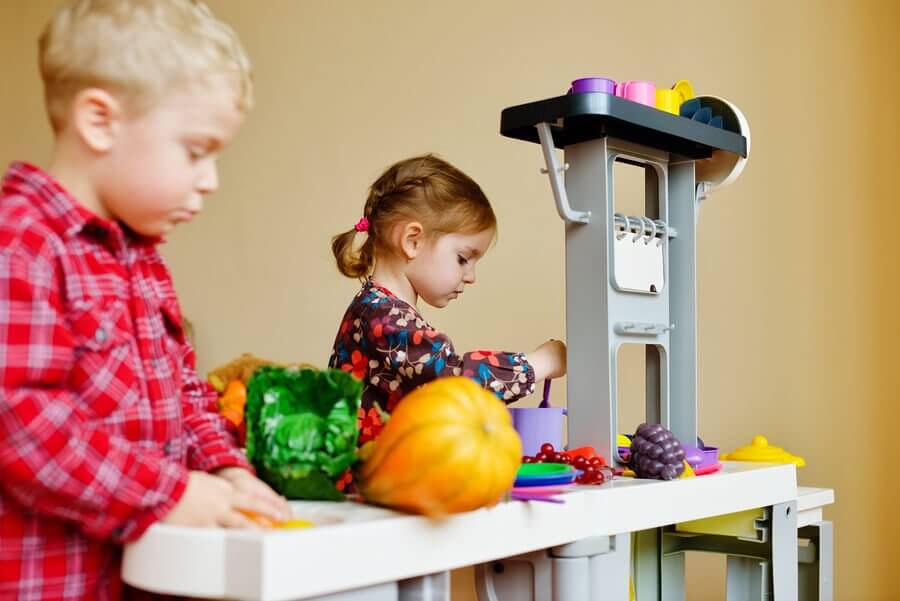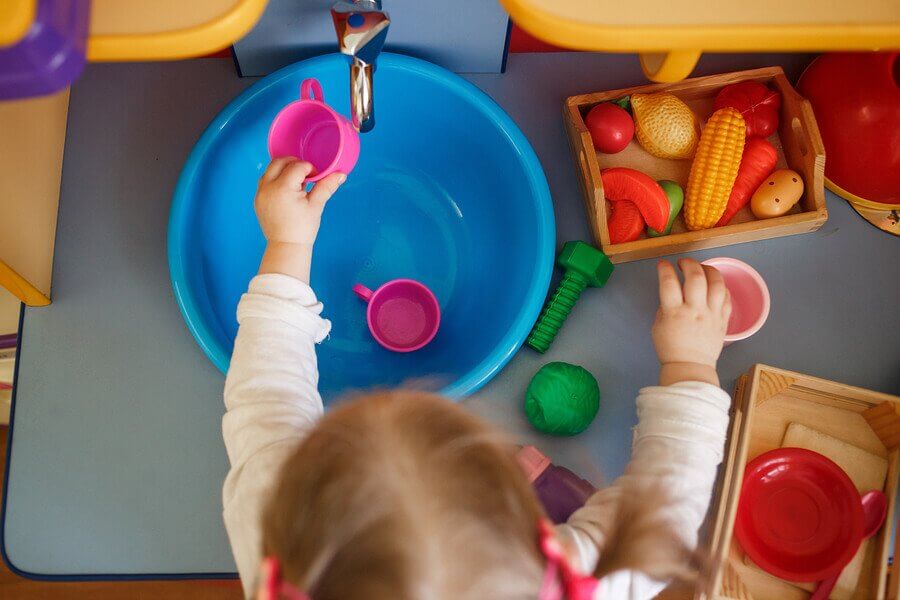Toy Kitchens and Their Appeal in Childhood

Toy kitchens have been classic childhood games for decades. However, it’s worth wondering why. Is it because they’re bright and colorful, or is it just fun pretending to be a chef? Although it seems simple, there’s a lot to look into.
Obviously, games’ appearances play an important role when it comes to attracting kids’ attention. Children love that these play sets are just their size, have bright colors, and have different compartments that might have different surprises.
However, the charm of toy kitchens goes beyond just what they look like. They offer a simple setup that kids can use however they want.
This way, kids can pretend to cook at home, be chefs, host a party, and so on. There are no limits when it comes to kids’ imaginations and the stories they can create.
The structure of toy kitchens
Children’ don’t care about how expensive toy kitchens are, but how much they can do with them, both individually and as a group. In fact, little kids like to include other family members in the game.

In general, toy kitchens have simplified versions of the basic elements of a real kitchen. They have burners, an oven, storage spaces and a sink.
Additionally, they can have other accessories like a kitchen timer, an appliance like a microwave or refrigerator, a window, trash can, cash register, and so on.
Of course, toy kitchens come in all different models. This way, you can find models of more traditional kitchen, or mobile food carts or mini supermarkets.
Kids can play with some by standing, while others are made for children to play sitting on the floor or on a stool, which may or may not come with the set.
Also, we should note that since they’re made of plastic and large pieces, you don’t have to worry about your children choking. However, the accessories may be smaller and you should always be careful. Obviously, you need to watch small children while they play.
The secret of their appeal
The reason kids love playing with toy kitchens is because they can imitate what adults do in real life. In other words, they invite kids to play role-playing games. Also, it satisfies their curiosity for the adult life that they see every day.
“Toy kitchens allow children to explore the world of cooking and eating in a safe and age-appropriate way.”
What do toy kitchens encourage?
Like many other types of toys, toy kitchens mainly promote creativity. Now, deep down, they also promote attention, memory, and even problem solving.
For example, kids should be able to remember where they put accessories or find them quickly when they need them for their game. On the other hand, they need to find out what each piece is for, which is where they develop problem-solving skills.

Other advantages
In addition to inviting them to let their imagination run wild and encourage their creativity, toy kitchens have other advantages. For example, by teaching kids to put accessories back in their cabinets, they learn responsibility and how to organize their things.
As a result, this type of toy allows kids to learn basic cooperation and other skills you need at home.
Also, since they feel useful and their parents are happy to see them playing in the kitchen, children will feel motivated to be more orderly and collaborative.
Another advantage of toy kitchens, and the games kids play in them, is that they allow kids to learn to follow instructions and carry out actions consistently.
For example, they realize that in order to make a recipe, they need to follow instructions. In addition, before serving a meal, they have to prepare a few things.
In short, these games help kids learn in a very important way. Also, by learning through playing, kids have lots of fun under parental supervision.
Toy kitchens have been classic childhood games for decades. However, it’s worth wondering why. Is it because they’re bright and colorful, or is it just fun pretending to be a chef? Although it seems simple, there’s a lot to look into.
Obviously, games’ appearances play an important role when it comes to attracting kids’ attention. Children love that these play sets are just their size, have bright colors, and have different compartments that might have different surprises.
However, the charm of toy kitchens goes beyond just what they look like. They offer a simple setup that kids can use however they want.
This way, kids can pretend to cook at home, be chefs, host a party, and so on. There are no limits when it comes to kids’ imaginations and the stories they can create.
The structure of toy kitchens
Children’ don’t care about how expensive toy kitchens are, but how much they can do with them, both individually and as a group. In fact, little kids like to include other family members in the game.

In general, toy kitchens have simplified versions of the basic elements of a real kitchen. They have burners, an oven, storage spaces and a sink.
Additionally, they can have other accessories like a kitchen timer, an appliance like a microwave or refrigerator, a window, trash can, cash register, and so on.
Of course, toy kitchens come in all different models. This way, you can find models of more traditional kitchen, or mobile food carts or mini supermarkets.
Kids can play with some by standing, while others are made for children to play sitting on the floor or on a stool, which may or may not come with the set.
Also, we should note that since they’re made of plastic and large pieces, you don’t have to worry about your children choking. However, the accessories may be smaller and you should always be careful. Obviously, you need to watch small children while they play.
The secret of their appeal
The reason kids love playing with toy kitchens is because they can imitate what adults do in real life. In other words, they invite kids to play role-playing games. Also, it satisfies their curiosity for the adult life that they see every day.
“Toy kitchens allow children to explore the world of cooking and eating in a safe and age-appropriate way.”
What do toy kitchens encourage?
Like many other types of toys, toy kitchens mainly promote creativity. Now, deep down, they also promote attention, memory, and even problem solving.
For example, kids should be able to remember where they put accessories or find them quickly when they need them for their game. On the other hand, they need to find out what each piece is for, which is where they develop problem-solving skills.

Other advantages
In addition to inviting them to let their imagination run wild and encourage their creativity, toy kitchens have other advantages. For example, by teaching kids to put accessories back in their cabinets, they learn responsibility and how to organize their things.
As a result, this type of toy allows kids to learn basic cooperation and other skills you need at home.
Also, since they feel useful and their parents are happy to see them playing in the kitchen, children will feel motivated to be more orderly and collaborative.
Another advantage of toy kitchens, and the games kids play in them, is that they allow kids to learn to follow instructions and carry out actions consistently.
For example, they realize that in order to make a recipe, they need to follow instructions. In addition, before serving a meal, they have to prepare a few things.
In short, these games help kids learn in a very important way. Also, by learning through playing, kids have lots of fun under parental supervision.
All cited sources were thoroughly reviewed by our team to ensure their quality, reliability, currency, and validity. The bibliography of this article was considered reliable and of academic or scientific accuracy.
- Instituto de consumo de Extremadura. Un juguete para cada edad. Extraído de: https://saludextremadura.ses.es/filescms/incoex/uploaded_files/CustomContentResources/UN_JUGUETE_PARA_CADA_EDAD.pdf
- AIJU. (2019). Juego y juguete 2019/2020 – Guía AIJU. AIJU, Instituto Tecnológico de Producto Infantil y Ocio. https://guiaaiju.com/guias/Guia-AIJU-2019-20.pdf
This text is provided for informational purposes only and does not replace consultation with a professional. If in doubt, consult your specialist.








